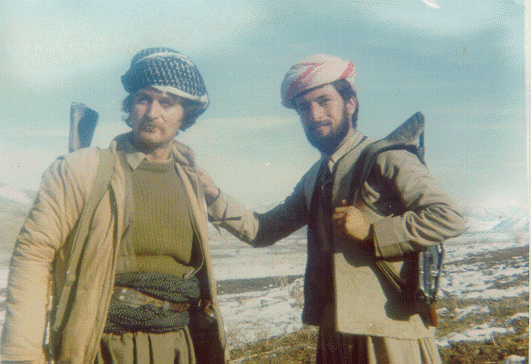President Obama announced that 300 Special Operations soldiers will be deployed to Iraq to advise the Iraq army and to perform special missions. He didn't elaborate on the missions so what does that mean?
A clue might be found in an extraordinary special operations mission from 2003 known as Operation Viking Hammer, when a small contingent of Green Berets flew under radar to Iraqi Kurdistan where al Qaeda linked terrorists known as Ansar al-Islam had established a safe haven from which they rumored to be manufacturing poison gas. This was an urgent concern to both the U.S. military and to the Kurds in nearby Halabja, a town that was gassed by Saddam in 1988, resulting in the deaths of over 5,000 men women and children.
The Green Berets, in small groups of 10-12 special ops soldiers (Operation Detachment Alpha (ODA) teams) took a low level flight (500 feet) from Rumania, through Jordan, to land behind the lines in Iraq. From there, they linked up a local militia -- in this case, the Kurdish Peshmerga -- with a plan to use them as troops to take out Ansar al-Islam.
The special forces met with Jalal Talabani, a Kurdish leader (and later, the Kurdish President of Iraq), to convince him to deploy 7,000 peshmerga fighters in a complicated six-pronged assault against heavily armed terrorists who had the high ground. When Talabani heard his men would have to storm uphill to defeat the enemy, he asked for details.
The commander of the special ops team produced a to scale topographical model and used it to outline the entire operation. One team would go in through the valley. others would cover them from the ridges. Still more would take outlying villages. Talabani gave the go ahead.
The Green Beret teams were dispersed between Kurdish (5-12 Americans to thousands of Kurdish fighters). The special ops teams had radios with which to coordinate the battle. They also had a sniper, a fifty caliber machine gun, heavy ordinance and a limited ability to call for air strikes or use anti-tank ordinance to gain the advantage.
The Americans fought beside the Kurds house to house in villages and stormed the high ground with them against withering gunfire to overwhelm the terrorists' position.
Ansar al-Islam was all but wiped out (at the time) with survivors fleeing across the border into Iran. The Americans and Kurds took their base where they found a laboratory with Ricin, a chemical weapon made from castor beans, and passports that identified the Ansar al-Islam fighters as Saudis, Somalis and other foreigners.
"Viking Hammer would go down in the annals of Special Forces history--a battle fought on foot, under sustained fire from an enemy lodged in the mountains, and with minimal artillery and air support."
The techniques used in the battle have become a textbook example of a small visiting command unit using the indigenous population as troops to reach an objective. Members of the Special Forces received the silver star for the operation. The Kurds went on to fight other battles with the Americans, and Jalal Talabani became the first Kurdish president of Iraq.
President Obama didn't specify what the Special Forces deployed to Iraq would do, but, if the past is an indication, Operation Viking Hammer provides a clue.

